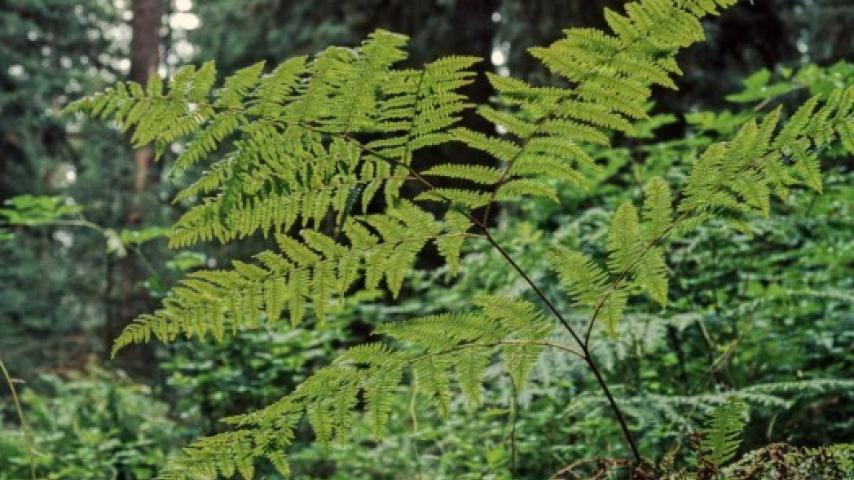Bracken Fern (Pteridium aquilinum)
Bracken Fern is one of the most common and widespread ferns in the Pacific Northwest.

KINGDOM Plantae - PHYLUM Pteridophyta - CLASS Pteridopsida - ORDER Polypodiales - FAMILY Pteridaceae
Extensive stands of it grow in open areas on soils drier than those favored by Sword Fern, and in addition it occurs almost throughout temperate and subtropical parts of the world in similar situations. It presumably evolved in a single region and then spread very effectively elsewhere. Fern spores can be carried long distances by wind or water, and all they need is an appropriate substrate of soil with sufficient water and nutrients for growth. Furthermore, as they are so small, they have few or no predators, unlike seeds.
Brackens are large ferns with much-divided, rather thick leaves. The large upright and then drooping fronds reach about 2 m in length and may grow in extensive pure stands. These stands produce a uniform environment that is in turn inhabited by several kinds of fungi.
Bracken releases allelopathic chemicals that suppress the growth of other species of plants, facilitating these pure stands. This is especially apparent during regrowth after fires, when bracken may cover large areas in monocultures.
Bracken has typical fern reproduction, with the large sporophytes that reproduce asexually to produce the spores that disperse into new habitats. These grow into tiny gametophytes that reproduce sexually and continue the next generation. The reproductive sori are characteristically all along the edges of the pinnae (leaflets) in Bracken Fern.
Relatively few insects feed on Bracken Fern, but comparisons of communities of these herbivores in different parts of the world show so many differences that they appear to be almost random sets of species and groups that have evolved to eat this moderately toxic species.